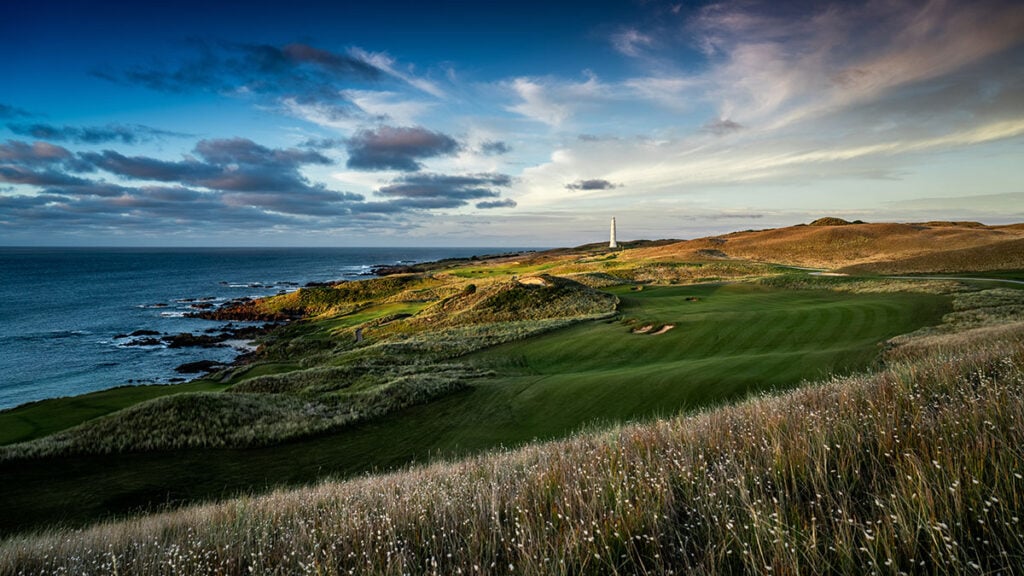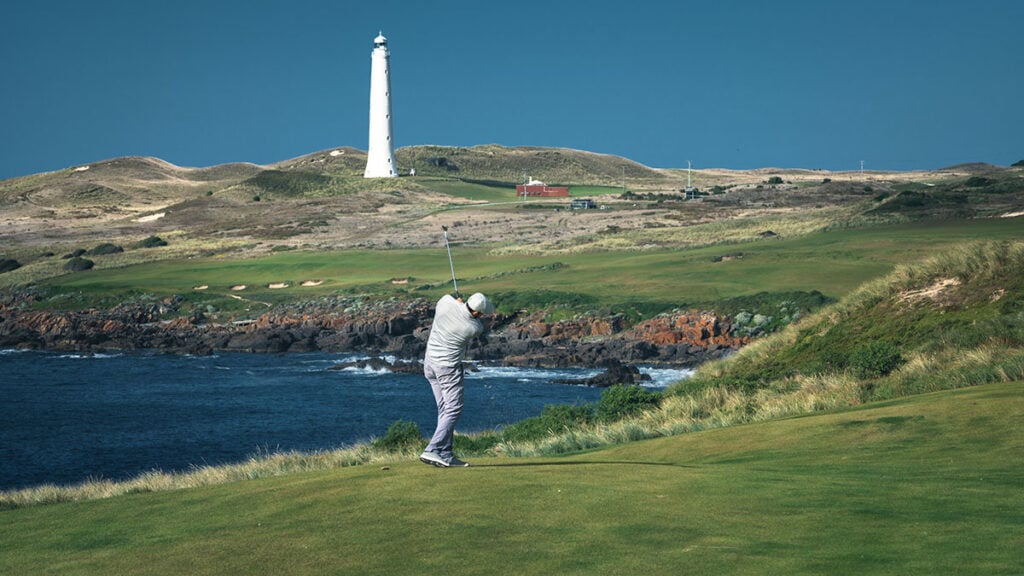Why there’s no such thing as too much golf on the Mornington Peninsula.
Photographs by Gary Lisbon
At some point it hits you. It might be the moment you dip your toes in the water at Portsea’s ‘Back Beach’, maybe it happens while wandering within the wonders of Point Nepean National Park or during that first sip of pinot from Pt Leo Estate winery. Perhaps it’s the ahhhhhh moment as you slink into the geothermal waters of Peninsula Hot Springs, although for golfers the moment usually takes place on a golf course. That moment is when realise you might just have found Australia’s most complete golf destination.
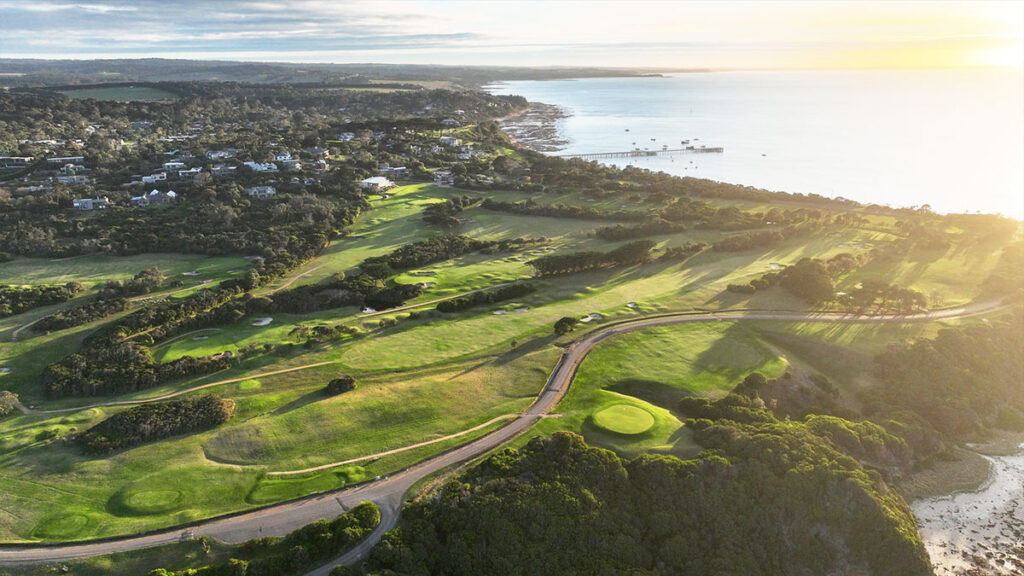
I’ve been venturing to Victoria’s Mornington Peninsula for 25 years. My moment of enlightenment came in February 2003 when I had the rare opportunity to play all three of The National’s golf courses in one sunny summer’s day. I was already coming off three consecutive days of playing 36 holes and was feeling a touch weary, yet my ‘moment’ came as I embarked upon my third lap of 18 holes and it
was not even midday. It was once I’d teed off on the Moonah course that I realised that there’s no such thing as too much golf on the Mornington Peninsula. It was approaching lunchtime on a Thursday, and I was setting out on my ninth round since Monday morning. And I wanted more.
My most recent trip this October was something of a nostalgic one. It marked 25 years since I first saw the Mornington Peninsula by playing at Portsea Golf Club while on holiday. I remember thinking the $50 green fee felt like a lot to pay for 18 holes, which perhaps it was in 1998 and when you’re on a first-year journalist’s salary, but I’d certainly changed my tune by round’s end. This visit was also 20 years since I first toured the peninsula properly, spending almost a week there and sampling not just the best golf courses but also the foremost wineries and restaurants in the region. That was the week in which I truly fell for the place, and I’ve spent two decades telling anyone who’ll listen that it’s the top golf destination in Australia. I’m not alone in that opinion.
“What’s my favourite golf destination in Australia? I reckon the Mornington Peninsula in Victoria is the ultimate golf girls’ trip,” says seven-time major winner Karrie Webb. “There are so many great golf courses down there, but you’ve also got the great wineries and amazing restaurants. Then, of course, there’s the hot springs and lots of good accommodation options. It’s such a wonderful destination.”

LIFE’S A BEACH
Strong northerly winds greeted me for my first round at St Andrews Beach in nearly a decade, as I couldn’t dodge the wild spring weather despite snaring the first tee-time of the day. It was a reacquaintance with a vengeance, a stark reminder of just how difficult a task a 6,074-metre layout can present.
Whatever the weather and however you score, St Andrews Beach remains a majestic slice of the peninsula. The Tom Doak-designed layout displays all the brashness of a used-car salesman but mixes that audacity with heavy doses of charm, which helps you forgive the course’s sassier moments. After hitting what I thought was a perfect tee shot on the par-4 fifth hole, I watched in stunned disbelief as my ball failed by the tiniest of margins to keep fading off the yawning left-side fairway bunker, instead catching the vertiginous wall of craggy, compacted sand lining the fairway side of the bunker and deflecting into the base of the pit. Yet my ‘reward’, if you will, was a clean lie on firm sand that allowed me to hit a hybrid pin-high. In the space of two swings, the course gave back what it had taken away.
Indeed, there’s a distinct rhythm to rounds at St Andrews Beach. With 10th-tee starts impractical due to the overall routing, every golfer experiences the moderate start – a short par 5 and short par 4 – before the course unleashes its might. Depending on the wind direction, there are few breather moments and only two par 5s in total on the par-70 layout. After walking off the 14th green, one might wonder how two holes running in the same direction can measure 457 metres (the 13th) and 276 metres (the 14th) but share the same par (4). Therein lies the genius of the design as par becomes somewhat arbitrary when the wind swings on a whim.
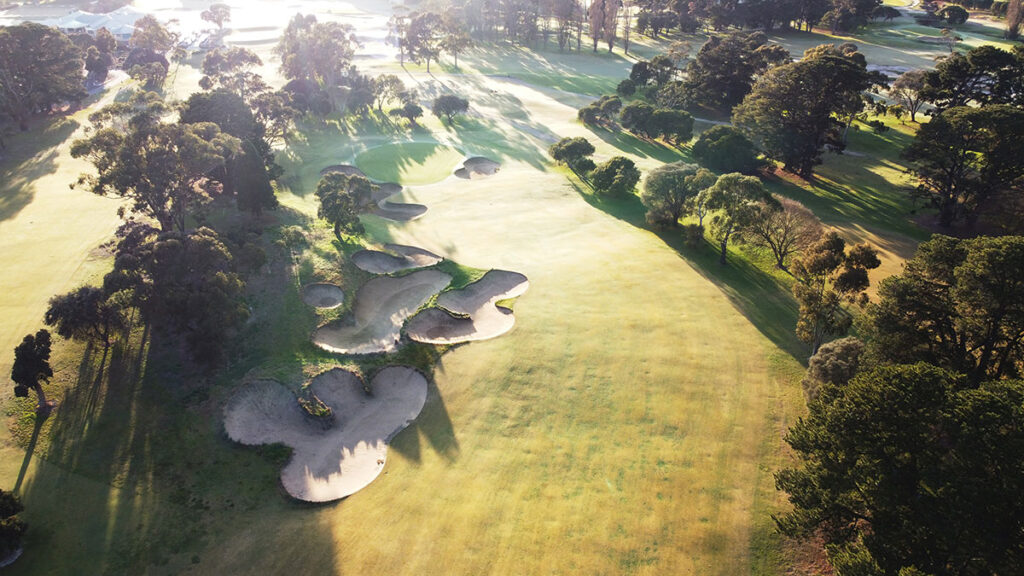
From the back tees I made only two pars in 18 holes, so it’s little wonder I felt the need to assuage my wounded ego with a lunchtime pint and burger across the road at St Andrews Beach Brewery, a time-honoured, post-round hang-out for golfers. Come the new year, though, the long-awaited opening of a new clubhouse at St Andrews Beach will give golfers reason to linger a little longer at the course after they tap in at the 18th.
Further east, Flinders Golf Club, which celebrated its 120th year during 2023, should be on your list of places to play for multiple reasons. While it sits on the opposite end of the peninsula to most of its sister courses, first-time visitors appreciate Flinders’ points of difference. It’s short, a little quirky in spots, but oodles of fun to play and ample challenge for good golfers. And it’s getting better.
A masterplan devised by course architect Michael Henderson has already seen the third and 16th greens rebuilt – to improve both design and drainage – as well as an expanded and re-aligned ninth tee. But there’s a little more at play at Flinders. As Henderson noted in his masterplan for the club, Flinders is historically significant. “Not only is it one of the earliest golf courses in Australia that still occupies its original site,” Henderson wrote, “it also boasts the design input of one of the great golf course architects.”
Alister MacKenzie’s famous Australian visit in 1926 was significant for so many of our great golf courses. While there remains some conjecture as to the degree of the good doctor’s input at Flinders, there is certainly record of him visiting the layout and making recommendations, at least several of which were implemented. So you’re walking across a little piece of Australian golf history when you play there.
You’re also walking on some of the most spectacular land on the Victorian coastline. Being on ‘the other side’ of the peninsula, Flinders gives golfers a better (and wilder) view of Bass Strait than many other parts of the Mornington Peninsula. Fortunately for golfers, the setting is a constant companion as you play 18 holes. Part of Henderson’s plan involves clearing scrub plus opening the views on several holes via smart tree removal. Meanwhile, raising the quality of the turf has been a priority – one that’s in evidence across the course.
No discussion of Flinders can exclude the teasing fourth hole, with its two ‘Coffins’ that bite into the fairway at just the right points. Formerly a par 3, one of MacKenzie’s recommendations was to convert it into a par 4, placing the two mini ravines more in play. The 272-metre excursion is a highlight in any round as players decide where to play from the tee and how much they should tempt fate.
The town of Flinders is also worth spending time in. Before making the final turn into the golf club’s driveway, I spotted a hand-painted sign beseeching motorists to slow down and look out for a koala that had been spotted in the area. What could be more adorable than that?
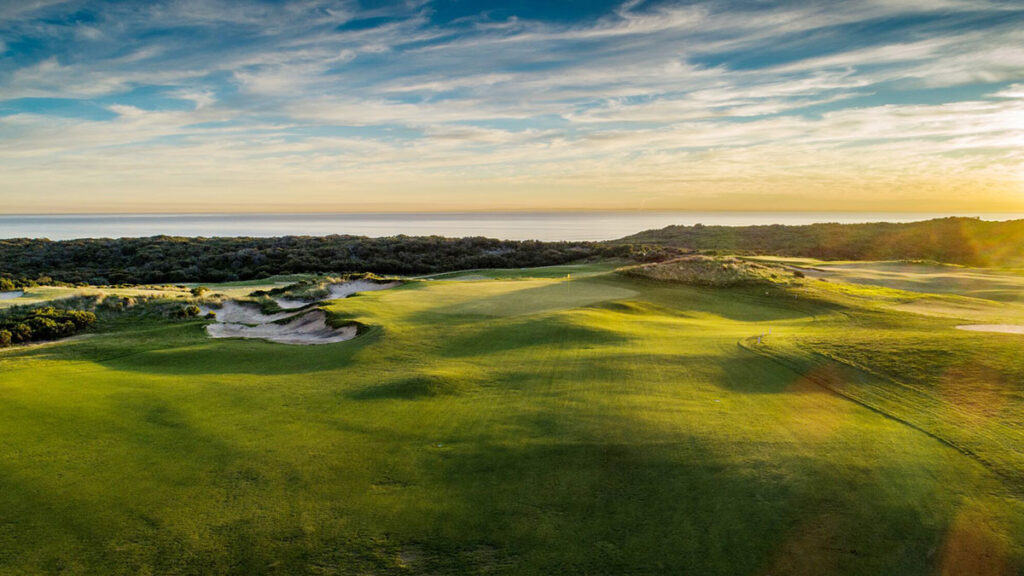
If Flinders has a rival for the best golf views on the peninsula, the leading contender is Bay Views Golf Course at Rosebud. On the boot-shaped parcel of land, Flinders occupies the heel, while the likes of Portsea and Sorrento are nearer the toes. Bay Views, which sits on the western side of Red Hill and Main Ridge, affords spectacular vistas along the ‘foot’ and the Port Phillip Bay side of the peninsula.
Formerly known as Rosebud Park Golf Course, Bay Views is managed by GSM Golf, which also looks after St Andrews Beach, among other properties. Significant effort and money have gone into transforming the hillside layout into a layout worthy of inclusion on any golf itinerary. With canted fairways and green sites benched into the hillside, it’s a course where flat lies are as rare as eagle putts. Mastering the elevation changes and coping with the awkward lies the terrain serves up is key on a layout where length is not the defence (5,231 metres, par 70). Attractive and strategic bunkering is a highlight at Bay Views, as are the healthy treelines. No hole feels suffocated by foliage, yet there’s a welcome separation between fairways.
The high point of the round – literally and figuratively – comes at the 12th and 13th holes, a par 4 and 5 combo that reaches the most elevated part of the course. The 12th climbs towards a green perched atop a hill and plays way longer than its 250 metres, while the next is a sweeping par 5 that begins from a tee set in the trees, moves out to a fairway that doglegs sharply left around a pair of bunkers then descends to an open green with the bay in the distance. It’s an ideal point to strike your best shot of the round.
The evolution of nearby Rosebud Country Club goes on, with the club continuing the gradual renovation of its North and South courses under an OCM masterplan laid out in 2019. Which is saying something considering it now hosts two significant professional tournaments each year. Next month will see the fourth edition of the Webex Players Series Victoria at Rosebud, while the ground-breaking international leg of the DP World Tour’s first stage of qualifying school has been held at the club the past two Augusts.
Since last January’s Players Series event, which saw South Korean Min A. Yoon become just the second woman to win a Players Series event, Rosebud has made further tweaks to its North course in particular. Additional sandy waste areas line the layout ranked 84th in Australian Golf Digest’s Top 100 Courses, these striking spaces working in harmony with the stands of towering pine trees and ground-level patches of pinestraw below that are such a feature of the site. A few green expansions and bunker alterations have taken place, while a new tournament tee at the 16th hole will be in play at the Players Series event, converting what was formerly a short par 5 into something with substantially more meat.
All of which fortifies a layout that has emerged in recent years from being ‘just another golf course on the Mornington Peninsula’ into a must-play venue. General manager Garrett Hollenstein says he’s lost count of the number of compliments the course has received from first-time players or golfers touring Rosebud for the first time in a while – compliments that are either commendation for the condition of the surfaces, as a value proposition, or both. It’s due praise, as the course is thriving under the watch of tireless course superintendent Ian Todd and is a bargain at $85 for 18 holes (on weekdays).
The National Golf Club stands as the beacon of the Mornington Peninsula golf scene. With three exceptional courses on the peninsula and a monumental clubhouse, it as iconic as it is impressive. There’s a perception that The National is a closed shop for non-members, and while that can be the case, there is scope to score a tee-time most days if you’re travelling from interstate or overseas. The club operates the Old, Moonah and Gunnamatta courses on a rotational basis, meaning at least one of the three layouts will be accessible most days by going through the proper channels.
Little has changed at The National since Tom Doak reworked the Gunnamatta (née Ocean) course late last decade. It was a celebrated renovation, one that turned the least popular of the club’s three peninsula layouts (the Long Island course has been part of The National fold since 2015 but is located nearer to Melbourne) and transformed it into the one members want to play most. With its more open green complexes and abundance of intriguing short par 4s, the Gunnamatta is a fine complement to the Old and Moonah, which can be uber-difficult when the wind blows. The Gunnamatta offers a little more respite in harsh conditions.
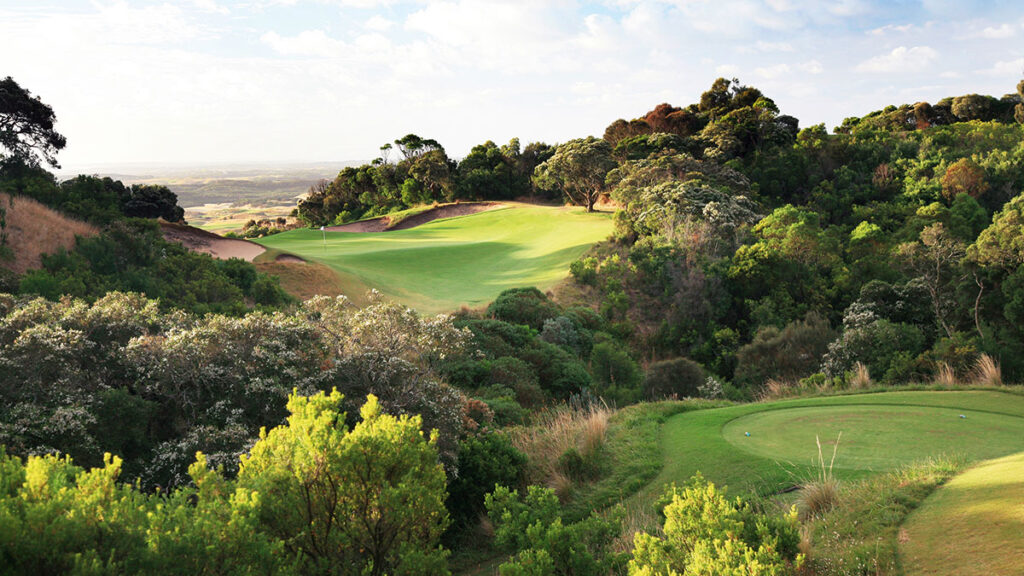
About the only change since the course re-opened is a tweak to the 18th tee. Safety issues in that section of the course led the club to build a new teeing area, extending the closer from a long par 4 to a shortish par 5 and taking the overall par to 73.
The Moonah course is becoming better known thanks to its place as a PGA Tour of Australasia venue, with the second staging of The National Tournament coming up in March after a successful first edition this year. Meanwhile, the Old course continues to hold its place as the heart of the club, being the original layout. I still remember the time I lost a ball there… from a putt. I was putting from the top level of the two-tiered third green to a hole cut on the lower section with a strong wind at my back. Two putting was a daunting prospect, but a far worse outcome materialised when it became apparent nothing was going to stop my ball from careering down the slope, off the green, down the fairway, onto a cartpath and into the scrub, never to be found. Pitfalls like that await across the storied layout, which in some conditions can be golf’s version of a strip-search – you’re vulnerable and made to look guilty even if you’re not.
To tour The Dunes Golf Links is to feel the Mornington Peninsula golf scene’s version of a warm hug. The course that started the modern wave of public-golf fascination with the area is as fun and challenging today as it was when it opened more than 25 years ago.
The ‘baby’ of charismatic proprietor Duncan Andrews, The Dunes encapsulates the golf-entrenched nature of the region known as ‘The Cups’ in a fashion that constantly excites. Mid-round, my scratch-marker English playing companion turned to me and called it the most authentic links experience on the peninsula, and it’s hard to mount a counter-argument. It’s long been my favourite course in the region, yet mostly for intangible reasons as much as for Tony Cashmore’s design.
The course, which Jason Day, Minjee Lee and Rory McIlroy toured while contesting the Dunes Medal during their amateur days, owns some of the most striking architectural features on the peninsula. Almost every hole feels like its own space, revealing moments of subtle solitude and intimacy throughout. When you drive over the dune at the par-5 fifth hole or thread a tee shot along the ridge at the par-4 15th, it’s difficult to escape the sense that golf was just made for this land. That feeling happens a lot at The Dunes.
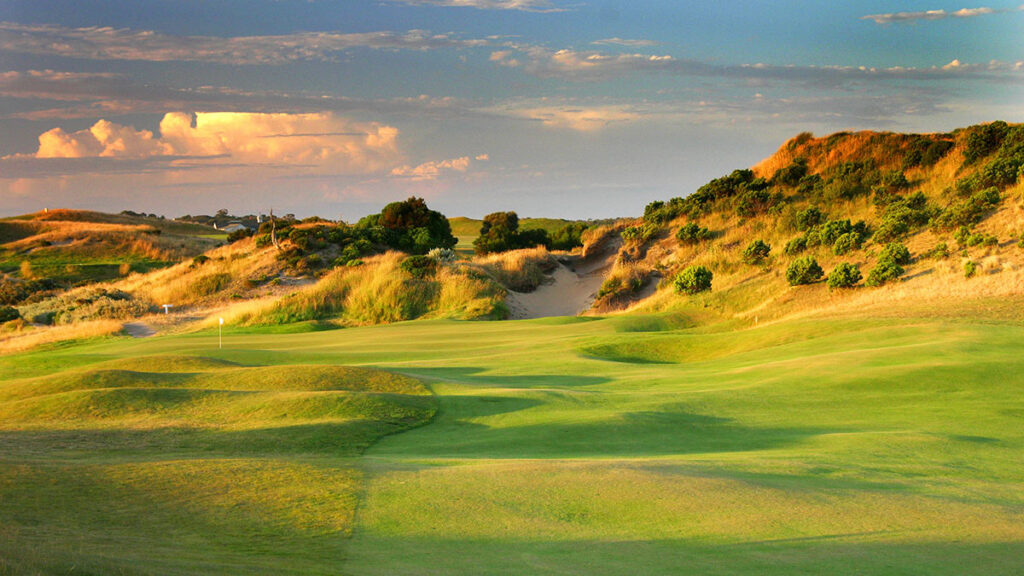
However, it continues to evolve. A decade or so ago the 15th and 16th holes were added and renovated but immediately looked like they’d always been there. Later, the ninth hole was straightened to play to the original practice putting green rather than a target tucked around a corner. More recently, a new first tee – one set further left than the original – now gives golfers a better view of the sharp dogleg-right for their opening salvo. Meanwhile, more and more golfers are enjoying the delightful Cups course, which should be considered among the best nine-hole courses in Australia. In a sign of the times, Andrews says the Cups sees almost equal golfer traffic to the main layout despite offering half the number of holes. Off the course, there is now a series of accommodation rooms perched on the highest point of the property overlooking the 18th green, meaning your Dunes experience needn’t end after the 18th, 19th, 27th or, we suppose, 28th hole.
It’s easy to forget that Moonah Links twice hosted the Australian Open. These days, it hosts the Victorian PGA Championship and the qualifying schools for the PGA Tour of Australasia. The step down in tournament stature is no indicator of any diminishment of the two golf courses, however.
Peter Thomson’s Open course, his magnum opus for course design in many ways, is the Mensa examination of Australian golf. Armed with a Slope rating of 144 from the back markers, it might be the most difficult examination in the game before you factor in the wind and weather (it still boggles this writer’s brain that Robert Allenby shot an opening 63 there – nursing an injured hand! – at the 2005 Australian Open). Fortunately for us mere mortals, playing the course from the forward markers reduces the difficulty without diluting the layout’s architectural merits. You still have a succession of pot bunkers to dodge and the persnickety greens need to be conquered whether you’re putting for eagle or triple.
As I hadn’t played it in years, I opted to instead tour the Legends course, which Ross Perrett penned while ‘Thommo’ was looking after the Open layout. The Legends takes you into more varied landforms, with standout moments like the steeply downhill tee shot at the fourth and the dunescape holes beginning at the 11th. There’s one curious tee shot to negotiate at the 15th, where the drive is semi-blind and gives the illusion of ample vacant fairway on the other side of the dune, yet upon arrival the fairway is almost a single-file corridor. So the smarter play is to take less club, aim for the corner area visible from the tee and play a short iron for your second.
The Legends is fun where the Open is challenging, which isn’t to say there is no fun to be had on the Open course and nor is the Legends a pushover. They’re just two very different tests that remain complementary to one another.
Moonah Links is another top one-stop-shop golf destination on the Mornington Peninsula, with the gorgeous Peppers resort situated beside the Open course’s first fairway. I closed my Mornington visit by spending a night there, which was pre-empted by a rarity in travel: an accommodation venue enquiring ahead of time to ask which size bed I would like to sleep in. It’s touches like that you remember long after the trip is over.
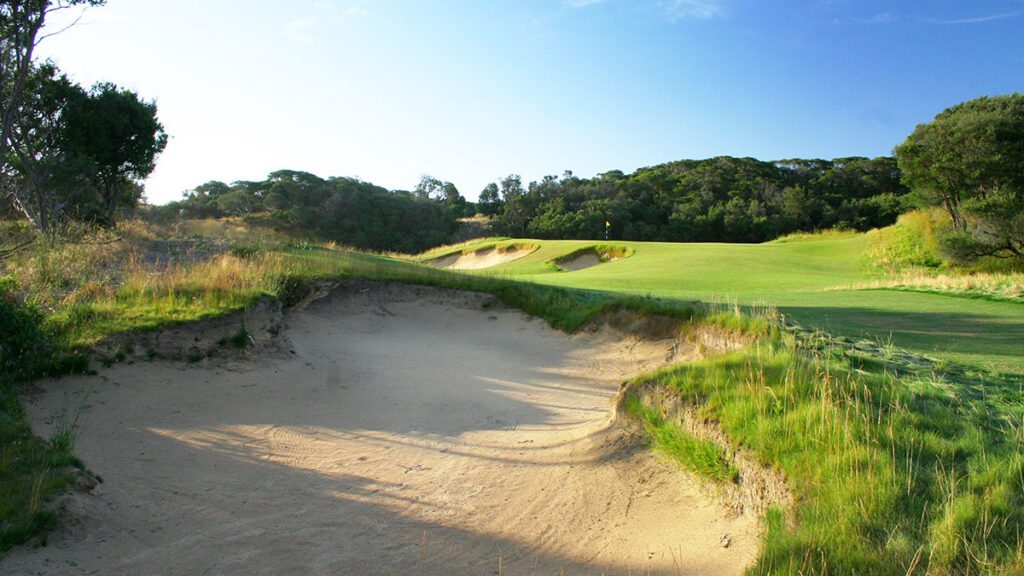
THE END OF THE LINE
The western end of the peninsula is home to the highly sought-after addresses of Sorrento and Portsea. Both towns are appealing to walk, dine and shop in, although the latter is arguably the more scenic and popular, while the former was described to me by one club official as more like “Chadstone By The Sea”. Regardless of your take on the two townships, they’re home to two short yet fun-packed golf courses.
“Golfers appreciate a place like this,” says John Burbergs, Portsea Golf Club’s general manager, uttering a statement that could apply to the whole peninsula. However, those words carry extra weight when it comes to Portsea, which is another of those complete golf venues where you can play, stay and dine without leaving the property, if you so choose.
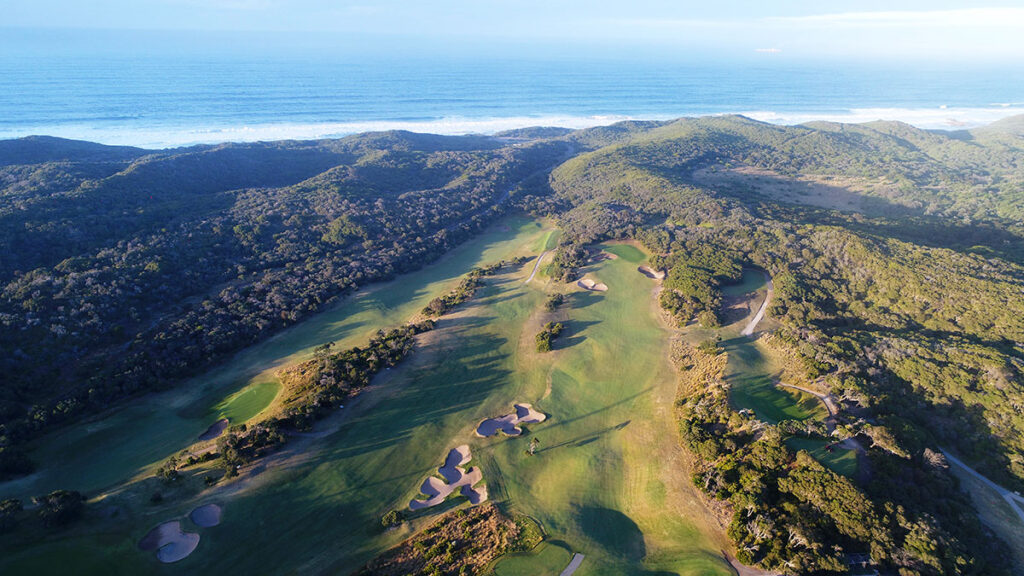
Ever since Portsea built a new clubhouse a decade ago, there’s been a different energy to the place. There was cash in the bank thanks to selling off a parcel of land near the previous clubhouse, a new structure in a far superior location, an income stream via the 24 hotel rooms and a place for members, their guests and visiting golfers to stay. Plus, the holes on the golf course were re-sequenced into what is arguably a better routing. In short, there was no downside.
These days, Portsea is continuing to embrace its positive and modern move forward while also reflecting on its past. The Portsea Pro-Am, which for so long was the best and most popular pro-am in the country, is being reincarnated and returned to its glory days. Course superintendent Chris Rogers and his team are currently focused on raising the level of course presentation. That said, Portsea’s year-round playability is its calling card. Through the extraordinarily wet October of 2022, when 150 millimetres of rain fell for the month, Burbergs says Portsea was closed for play for a grand total of four hours.
The course is linksy in style but with far more contour than a traditional links layout, yet those heavy undulations make for a better experience. The extra movement in the land is incorporated into the design brilliantly, giving rise to several thrilling shots and strategic decisions. How to tackle the short par 4s at the 10th and 15th are crucial moments in any round, as glory and disaster court golfers in equal measure.
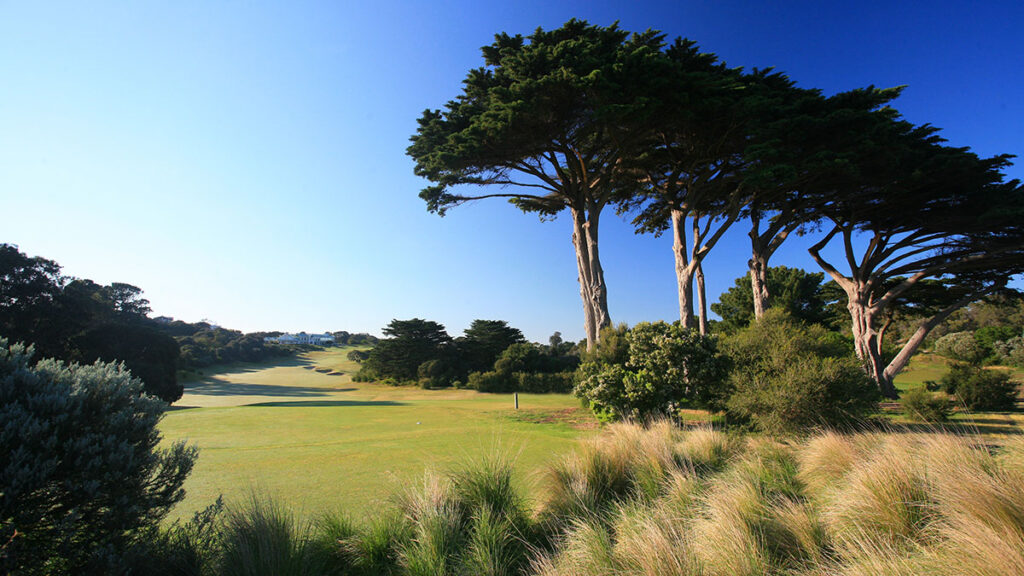
Of Sorrento Golf Club, Peter Thomson often used to say: “I’d rather be here than at Gleneagles, Pebble Beach or Carnoustie.” The club and course meant something special to the five-time Open champion and it’s not hard to see why. There’s a quaint charm to the place that has been nurtured through the years and seeps across the entire property.
The golf course is in career-best shape, too. Course architects Neil Crafter and Paul Mogford used much of last decade to enhance Sorrento by adding a cheeky little 19th hole at the rear of the 11th green, improving the first, ninth and 10th and upgrading the bunkering on several holes. Today, their work looks seamless – the kind every renovating architect hopes for, where improvements are evident in an overall evaluation but the returning golfer might need help spotting the specifics.
On a capricious spring afternoon when bookies were paying out equally for hypothermia and sunstroke, I struck my tee shot on the eighth hole at Sorrento in full sunshine, putted out in sunshine but was peppered by rain and tiny hail stones while walking from the tee to my drive. It was that sort of day.
Yet it was also the kind of visit that stoked the fires and reminded me just how good golf on the Mornington Peninsula is. Tiny hail hit me, the voracious peninsula scrub stole half a dozen of my golf balls, I left shots in bunkers. But I also holed putts, found a couple of birdies and walked off every course wishing I was back on the first tee to do it all again. Golf on the Mornington Peninsula warms the soul, whatever the weather and no matter your score.

